How did the early Universe evolve into today’s Universe?
(Interacting galaxies Arp 142. Image: NASA, ESA, and the Hubble Heritage Team (StSci/AURA))
Like well-made tomato soup, the very early Universe was hot and (fairly) smooth. How did it evolve into the Universe that we have today — a Universe more like minestrone — a Universe that has galaxies, stars, planets and people?
One aspect of the process astronomers want to learn about is how galaxies assembled themselves and how they started forming stars.
Using a variety of tools, astronomers can spot signs of star-formation in very distant galaxies. Because light takes time to travel, those galaxies are not merely far away in space — they are far away in time. That is, they existed early in the Universe’s history.
The current contender for the most distant galaxy (or ‘proto-galaxy’) known: a tiny red blob called MACS0647-JD, just a fraction of the size of our Milky Way galaxy. Credit: NASA, ESA, and M. Postman and D. Coe (STScI) and CLASH Team.
For how long did those ancient galaxies keep making stars? And how many stars did they make? If we can answer those questions, we can determine what those distant galaxies evolved into — what the relationship is between those galaxies and the galaxies we see around us in today’s Universe.
The answers depend on how much of the raw material for stars — cold molecular hydrogen gas, H2 — is lurking in those distant galaxies.
Unfortunately, cold H2 is essentially undetectable. The gas can only be detected when it is heated, shocked or ionised. But it’s only the cold H2 that can collapse in on itself to make stars: hot H2 doesn’t do this.
Fortunately, if there is any star-formation going on in the galaxy, the cold H2 comes hand-in-hand with a partner — carbon monoxide (CO). (The carbon is provided by the stars as they evolve.)
There is a well-established ratio between the amount of CO and the amount of cold H2 in a galaxy. So if you can detect and measure the CO, you have a very good estimate of the H2.
In another piece of good fortune, CO is a lot easier to spot than H2. It can be detected by radio telescopes, which pick up radio waves that the CO molecule emits at specific frequencies.
Spotting carbon monoxide: in this nearby galaxy (the Large Magellanic Cloud), the green patches are regions rich in carbon monoxide (CO). (Red areas are cold atomic hydrogen gas, blue areas are ionised hydrogen gas.) Credit: the MAGMA team. Images made with telescopes of CSIRO and CTIO.
Finding CO sounds simple, but it’s not. As recently as the 1990s, people were using radio telescopes to look at high-redshift (distant) galaxies and were NOT finding CO in them. But now they ARE finding it. What has changed is the capabilities of the telescopes they are using.
The most reliable radio frequency for detecting CO is the one produced by the so-called “ground transition” of the molecule. CSIRO’s Australia Telescope Compact Array radio telescope can detect this radio frequency.
But that, by itself, is not enough. The Compact Array has two other abilities that allow it to detect the CO in these distant galaxies.
First, it is very sensitive — that is, it can detect faint signals.
Second — and this is crucial — it has a very wideband receiving system. That is, it can “look” at a big chunk of radio spectrum simultaneously. That’s important because the peak in the radio spectrum — the “spectral line” — that indicates the presence of CO in these distant galaxies – is a broad peak. To be able to spot it, you need to be able to see it emerging from quite a wide stretch of radio spectrum.
Able to detect carbon monoxide (CO) in distant galaxies — CSIRO’s Australia Telescope Compact Array telescope, near Narrabri, NSW. Photo: David Smyth
The Compact Array is one of handful of telescopes that are really useful for detecting CO in distant galaxies. (The other two major ones are the Karl Jansky Very Large Array in the USA and the ALMA telescope in Chile.)
In one recent piece of work, Dr Bjorn Emonts (CSIRO Astronomy and Space Science) and his colleagues used the Compact Array to study a massive, distant conglomerate of star-forming ‘clumps’ or ‘proto-galaxies’ that are in the process of coming together as a single massive galaxy. This structure, called the Spiderweb, lies more than ten thousand million light-years away (at a redshift of 2.16).
Dr Emonts and his colleagues found that the Spiderweb contains at least 6 x 1010 times the mass of the Sun in molecular hydrogen gas, which is enough to keep stars forming for at least 40 million years.
The Spiderweb, imaged by the Hubble Space Telescope – a central galaxy (MRC 1138-262) surrounded by hundreds of other star-forming ‘clumps’ or ‘proto-galaxies’. Credit: NASA, ESA, George Miley and Roderik Overzier (Leiden Observatory)
In a second set of studies, Dr Manuel Avarena (European Southern Observatory) and colleagues measured CO, and therefore H2, in very distant galaxies (redshifts of around 2.7).
The faint radio waves from these galaxies were amplified by a natural “magnifying glass” — the gravitational fields of galaxies that lie between these distant ones and Earth. This process, called gravitational lensing, allows astronomers to study light or radio waves from distant galaxies that would normally be too faint to work with .
Dr Avarena’s team was able to measure the amount of H2 in both galaxies they studied. For one galaxy they could also use the radio emission to make an estimate of how rapidly the galaxy is forming stars — an estimate independent of the other ways astronomers estimate the star-formation rate.
These projects are just the start of some really exciting science. As we study more of these distant galaxies, we’ll be able to understand better when, where, how and why they form stars.
Publications
B. H. C. Emonts and 15 co-authors. CO(1-0) detection of molecular gas in the massive Spiderweb Galaxy (z=2). Monthly Notices of the Royal Astronomical Society 430, 3465 (2013). Online at http://arxiv.org/abs/1301.6012
M. Aravena and 28 co-authors. Large gas reservoirs and free-free emission in two lensed star-forming galaxies at z = 2.7. Accepted for publication in Monthly Notices of the Royal Astronomical Society. Online at http://arxiv.org/abs/1305.0614

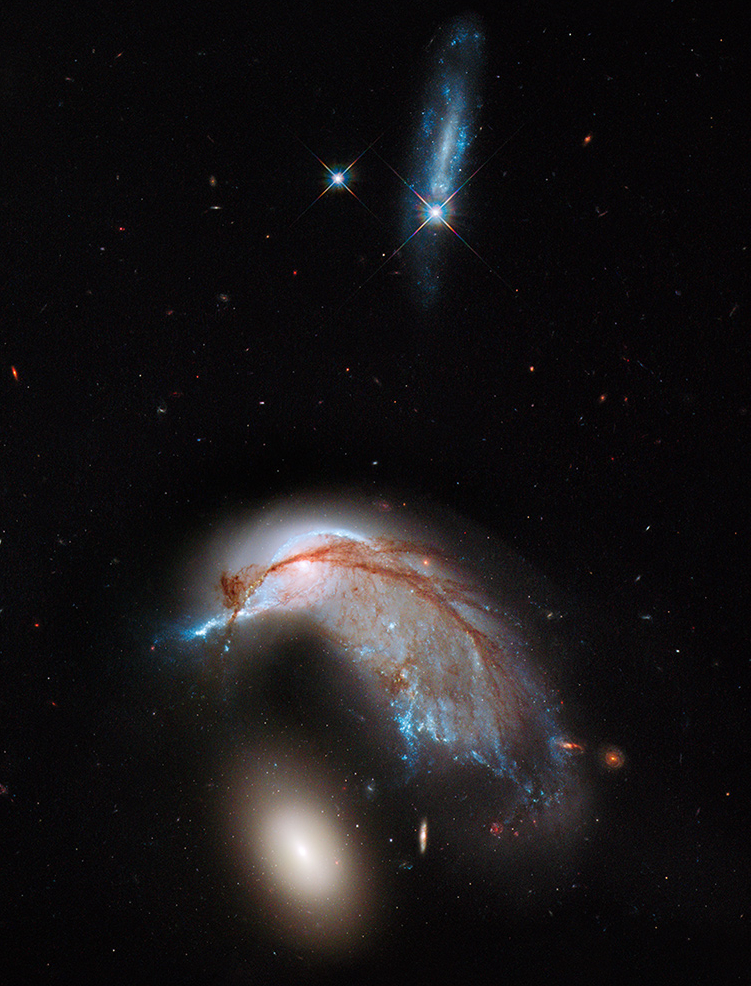
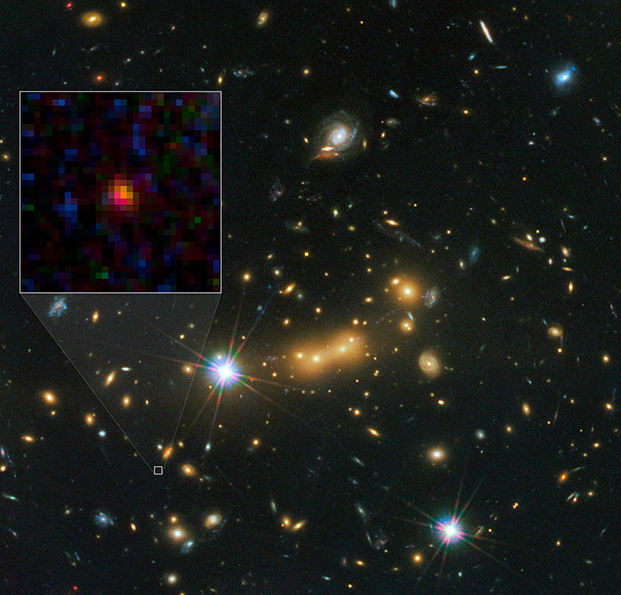
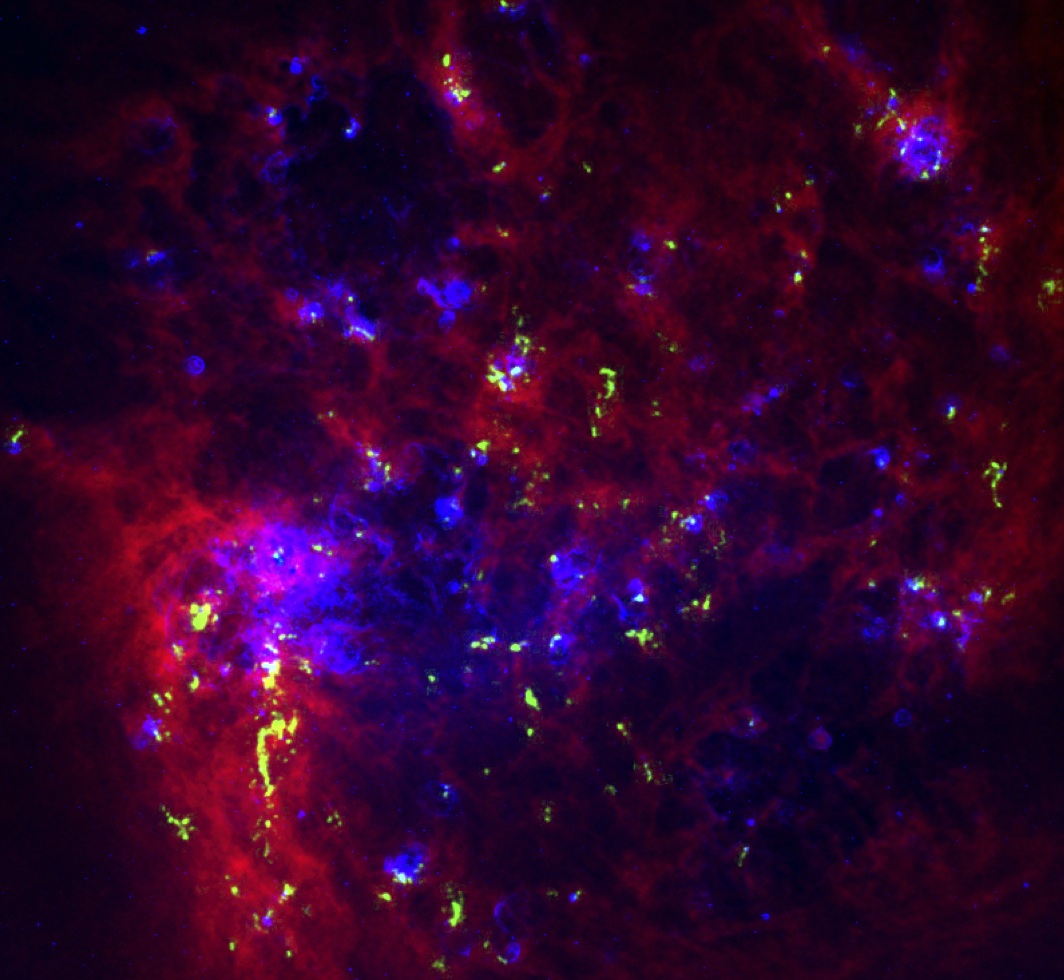
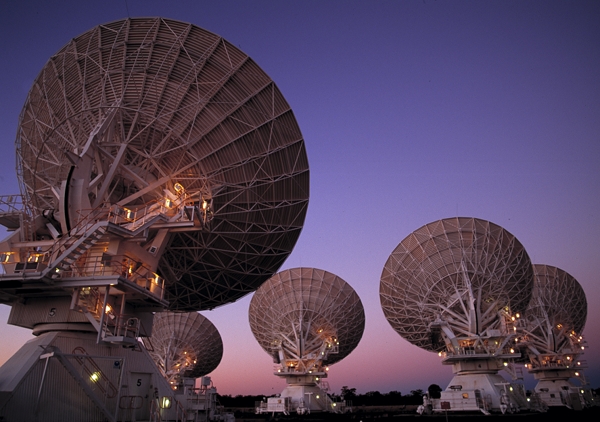
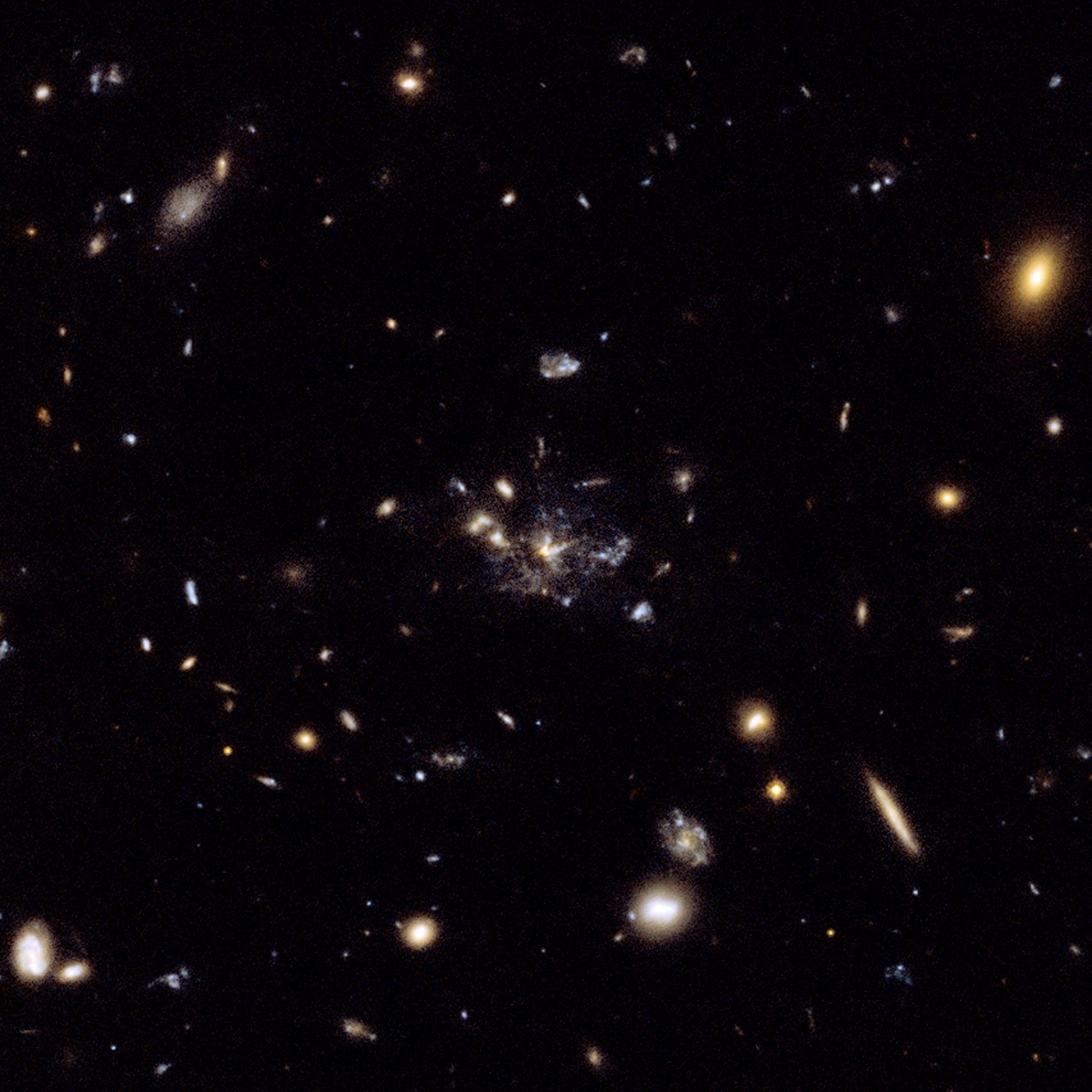

Pingback: ATCA’s Silver Jubilee | Universe @ CSIRO
Pingback: Wormhole Wednesday: That pesky H2O | Universe @ CSIRO
25th June 2013 at 10:04 am
Reblogged this on News @ CSIRO.